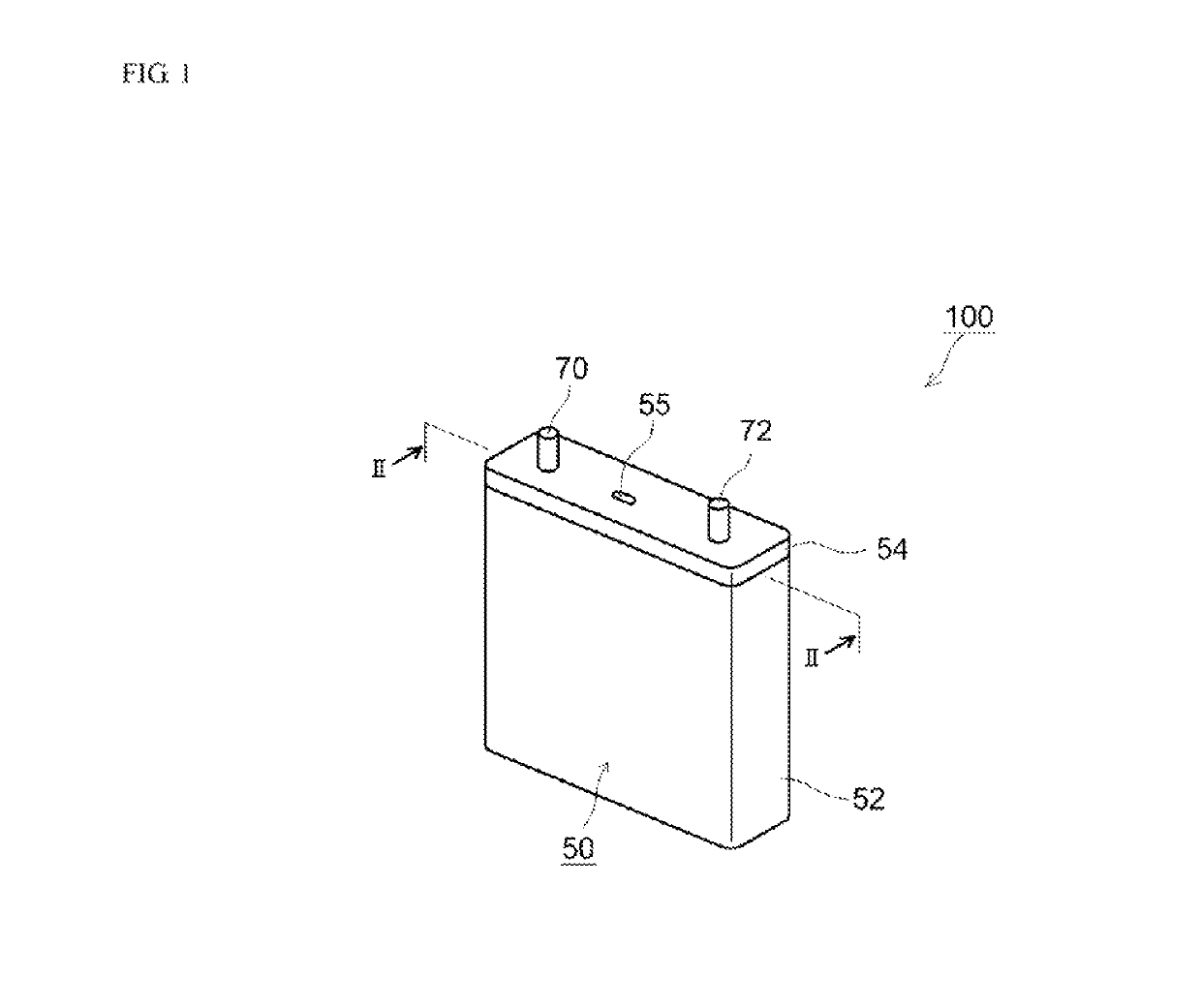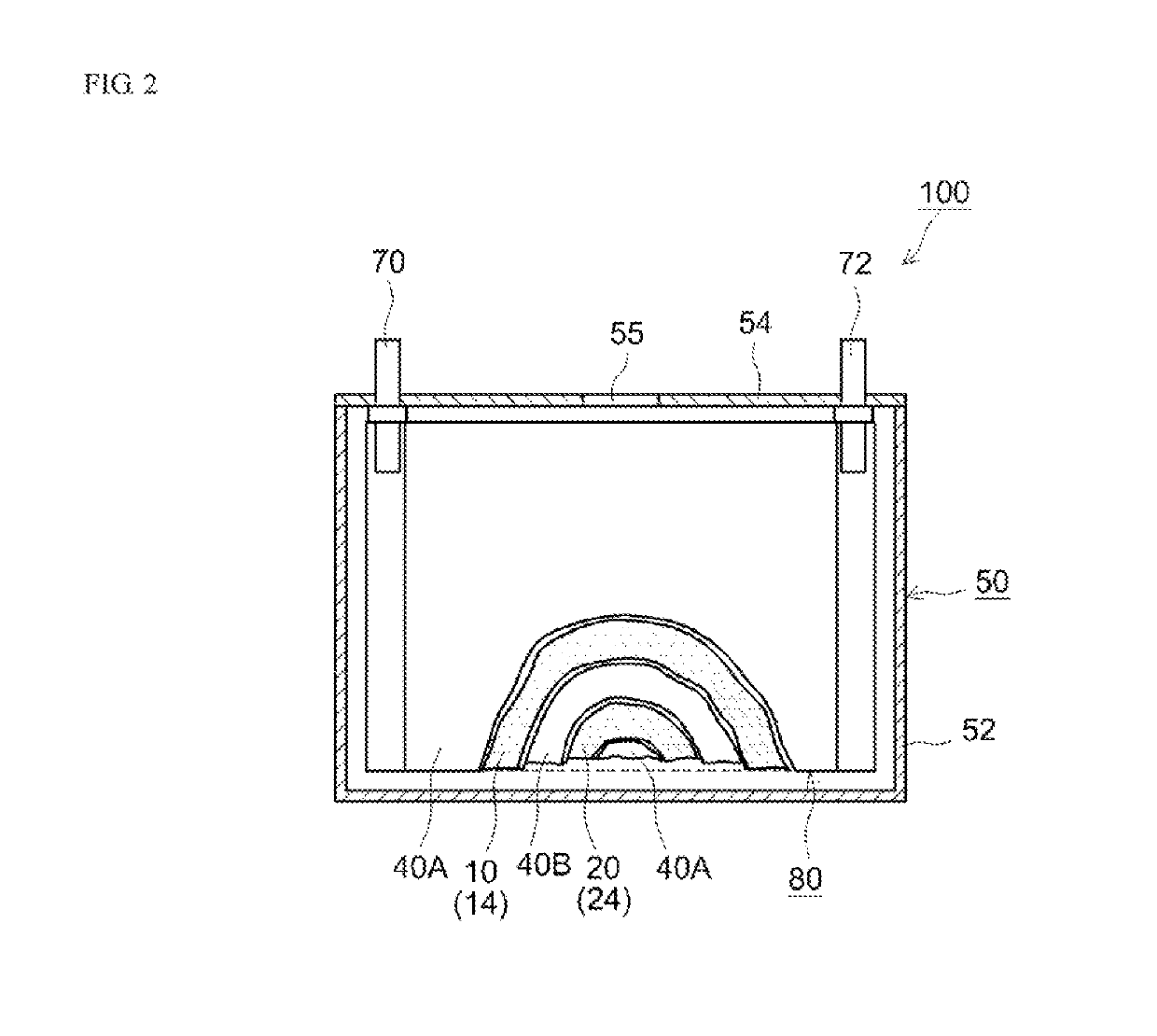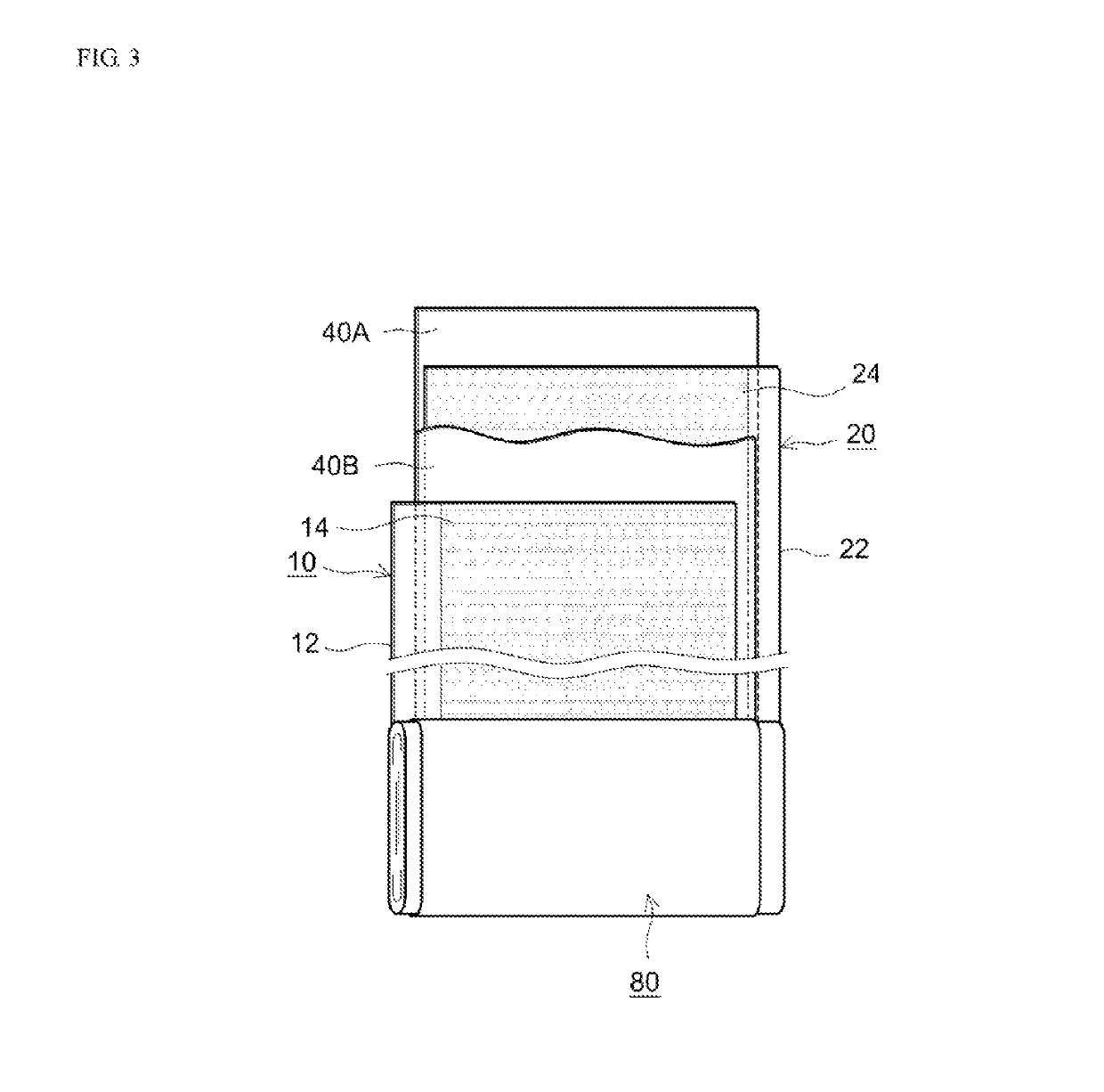Nonaqueous electrolyte secondary battery
a secondary battery and nonaqueous electrolyte technology, applied in the field of secondary batteries, can solve the problems of the risk of a decline in other battery performance features, and achieve the effects of reducing resistance, excellent output characteristics, and reliably and securely formed
- Summary
- Abstract
- Description
- Claims
- Application Information
AI Technical Summary
Benefits of technology
Problems solved by technology
Method used
Image
Examples
examples 1 to 10
[0099]The batteries fabricated as described in the preceding were processed using different charging patterns. Thus, as shown in Table 1, in Examples 1 to 6 constant current charging (CC charging) was performed at the charging rate (current value) given in the corresponding column until the voltage between the positive and negative terminals reached 4.1 V; this was followed by constant voltage charging (CV charging) until the current value became 0.02 C. In Examples 7 to 10, CC charging was performed using the conditions shown by (1) followed by CCCV charging using the conditions shown by (2). Thus, after CC charging for the prescribed time at the charging rate shown in (1), CCCV charging was carried out under the conditions shown in (2) in the same manner as in Examples 1 to 6. The charging process was performed using 3 cells in each example (N=3).
[0100]
TABLE 1conditions in the charging processchargingcharging ratecharged voltagemethod(C)(V)stop conditionsExample 1CCCV0.2 C4.1 V0.0...
PUM
| Property | Measurement | Unit |
|---|---|---|
| specific surface area | aaaaa | aaaaa |
| specific surface area | aaaaa | aaaaa |
| temperature | aaaaa | aaaaa |
Abstract
Description
Claims
Application Information
 Login to View More
Login to View More - R&D
- Intellectual Property
- Life Sciences
- Materials
- Tech Scout
- Unparalleled Data Quality
- Higher Quality Content
- 60% Fewer Hallucinations
Browse by: Latest US Patents, China's latest patents, Technical Efficacy Thesaurus, Application Domain, Technology Topic, Popular Technical Reports.
© 2025 PatSnap. All rights reserved.Legal|Privacy policy|Modern Slavery Act Transparency Statement|Sitemap|About US| Contact US: help@patsnap.com



